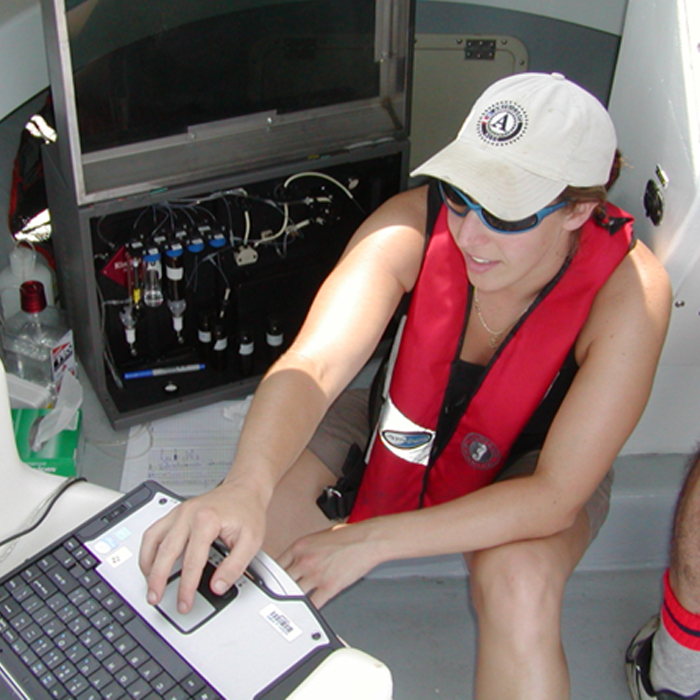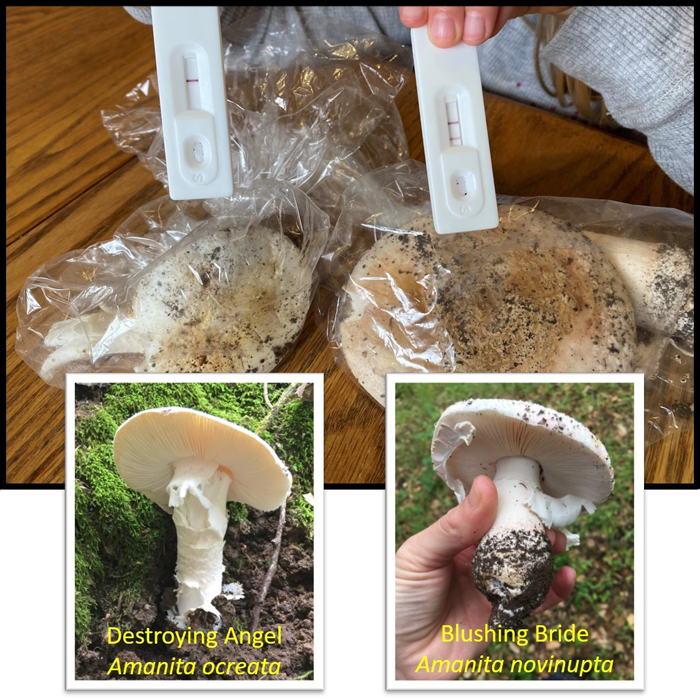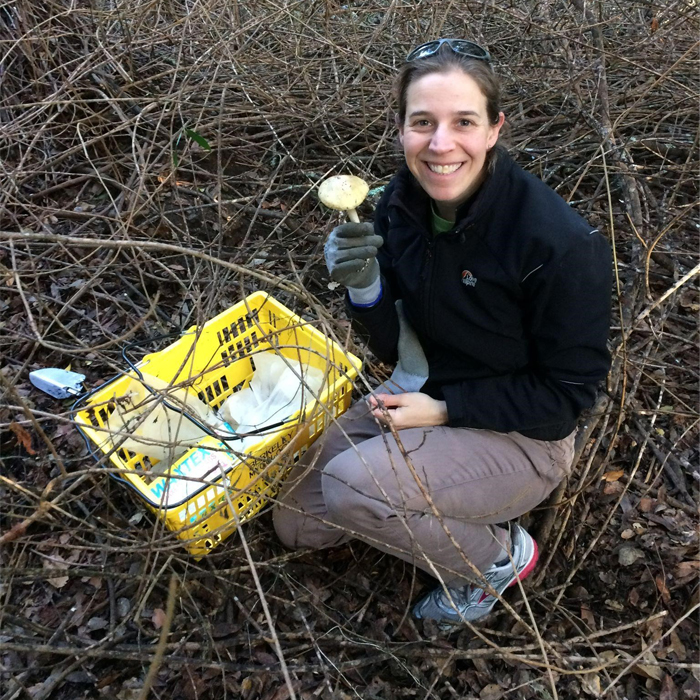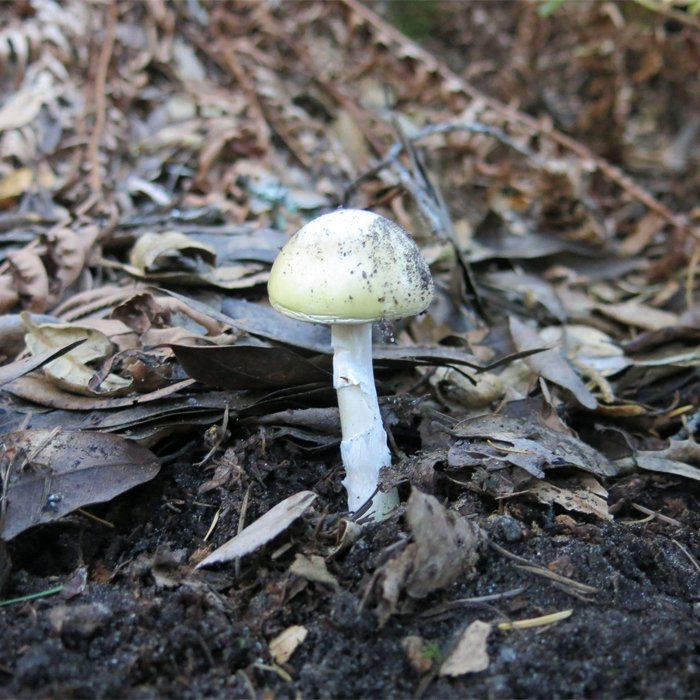
The Science of Safety
CMU alumna improves our health and environments with biochemistry and testing
By Elizabeth Speed
Media Inquiries- Associate Dean for Communications, MCS
- 412-268-9982
Carnegie Mellon University alumna Candace Bever is a biological detective — using science to uncover chemical markers that reveal life-saving information.
Armed with a sample and a small plastic cassette resembling an at-home pregnancy or COVID-19 test, Candace’s research focuses on the rapid detection of infectious agents, toxins and pollutants.
“I develop tools that make the invisible visible. I develop tools that allow us to ‘see’ — or detect — toxins or viruses that might harm us,” says Candace, who graduated from the Mellon College of Science in 2004. “By detecting these molecules we can answer questions like, ‘What is making me sick’ and ‘Is there something here that can hurt me?’ This uses the same technology that rapid tests use to detect COVID-19, and it can be applied to many aspects of our lives.”
At Carnegie Mellon, Candace’s undergraduate degree in biological sciences and lab work sparked her interest in monoclonal antibodies — specifically how to develop these remarkably unique yet very informative biological reagents
These tests use an antibody to detect viruses, toxins or pollutants. The potential information is wide-ranging and life-saving, especially when results are rapid.
Within just a decade, Candace’s contributions to rapid tests are equally as expansive and packed with promise, setting her on a path to positively impact human health and the environment.
“I develop tools that make the invisible visible. I develop tools that allow us to ‘see’ — or detect — toxins or viruses that might harm us."
Detecting Oil Spills
After CMU, Candace pursued a Ph.D. in marine science at the Virginia Institute of Marine Science at the College of William & Mary.
Her research began by developing antibodies but instead of the more notorious viral markers, Candace dove into the waters of the Elizabeth River to apply the same science to water pollution. The river that feeds into the lower Chesapeake Bay is one of the most contaminated waterways in the nation and a Superfund site designated by the U.S. Environmental Protection Agency.
PAHs (polycyclic aromatic hydrocarbons) are highly toxic and carcinogenic compounds found in types of industrial waste that are very likely to be washed into waterways and also correlate to oil leaks and spills.
Detecting them used to be a time-intensive, costly process.
Candace’s doctoral work used the biology of the immune system to identify PAHs in water. Her team’s first step was in a lab where they identified the antibodies produced by mice that were able to detect PAHs. Those antibodies were loaded into biosensor cartridges, then a few drops of water were piped onto the cartridge. When the antibodies bound to or detected the PAHs in the water, the sensor indicated their presence.
“PAHs are components in oil, so this biosensor is basically an oil spill detector,” Candace says. “ExxonMobil has been using this for the last decade in their research on simulated oil spills. The idea that we could measure PAHs in near-real time and report results within 10 minutes to the managers on site was novel. It was a great step forward for environmental chemistry.”

Candace operates the antibody-based biosensor on board a research vessel in the Elizabeth River.

A side-by-side comparison shows two Amanita mushrooms. The cassette on the left showing one line is positive, indicating the sample contains amatoxins, while the one on the right with two visible lines on the cassette is negative for amatoxins. They came from two very similar-looking mushrooms, the destroying angel and the blushing bride.

Candace forages for Amanita mushrooms.
Detecting Toxins
Amanita mushrooms are an invasive species in California of the most unwelcome kind.
Known as death caps or destroying angels, these benign-looking mushrooms contain deadly amatoxins that can cause catastrophic health issues and even death if ingested. The U.S. Department of Agriculture has used the antibody detection process to improve food safety but had not applied it to highly poisonous mushrooms. In 2017, they hired Candace as a research microbiologist — AKA a food-borne toxin detective.
“We’re able to save lives, if people are more informed or have tools to identify a deadly mushroom,” Candace says. “That’s where my newest ambition has been: put science in people's hands; make it easy, accessible and informative; and help them make good choices based on the information.”
Relying again on antibodies that react to the mushroom’s amanitins, Candace developed another fast test that flags the toxin’s presence.
“All you need is a little piece of mushroom,” Candace says. “Shake it in water and put a drop of that water on the test strip. The test works for urine in the same way. If someone, or a pet, has accidentally ingested an amanitin-containing mushroom, the test can detect these same toxins in that individual’s urine.
As there’s no antidote once ingested, the true value of the test is prevention. But there’s also value in being able to confirm the exposure. So Candace created AMATOXtest, LLC., a startup that makes her test available to anyone who needs it. It’s a game-changer for veterinarians dealing with critically-ill dogs suffering from gastrointestinal distress and headed toward liver failure.
“As soon as I showed vets the tool, they were very eager to use it in their practices,” she says. “Our initial intent was to develop the test for food products like canned or dried mushrooms for food safety purposes. It was fortuitous that it was sensitive enough to work as a medical diagnostic test, too.”
“To the credit of CMU, the required courses for my major such as biochemistry, molecular biology and organic chemistry were foundational for my career. In addition, I took several classes that were outside of my major, and those were absolutely invaluable, too.”
Detecting Threats to Health and Beyond
Candace now works at InBios International, a medical diagnostic company specializing in the detection of infectious diseases like Zika and West Nile viruses and dengue fever as well as biothreats. It’s a small and growing company with a large impact, focused on neglected diseases and creating one-of-a-kind tests for them on a smaller scale. Candace first joined the company as a research and development scientist.
“I began partnering with universities and different entities to collaboratively develop effective tests that accurately discern a disease,” she says.
More recently, Candace shifted her role to the manufacturing side where she utilizes her expertise and knowledge of the full development process to help ramp up and expand production capacity. The first test slated for high-scale production is for InBios’ brand of rapid COVID-19 at-home tests. Her work will ultimately reach millions of people.
“To the credit of CMU, the required courses for my major such as biochemistry, molecular biology and organic chemistry were foundational for my career. In addition, I took several classes that were outside of my major, and those were absolutely invaluable, too,” she says.
“A rhetoric class prepared me to understand the multitude of interpretations one may have from the same data, and programming classes gave me lots of tools to understand how to work well with engineers. As a collegiate athlete playing volleyball, I learned to balance work and play — a much needed skill in any career.”
Candace also participated in the NASA Reduced Gravity Student Flight Opportunities Program where she studied science in microgravity, or what’s better known as the “vomit comet.” The science was vital, but NASA also required her to think about outreach and helping others understand their scientific endeavors.
“Since that experience, outreach and science communication has been a priority for me because it set a requirement to make sure that my science was meaningful, but also that I could describe it clearly to any audience.”
